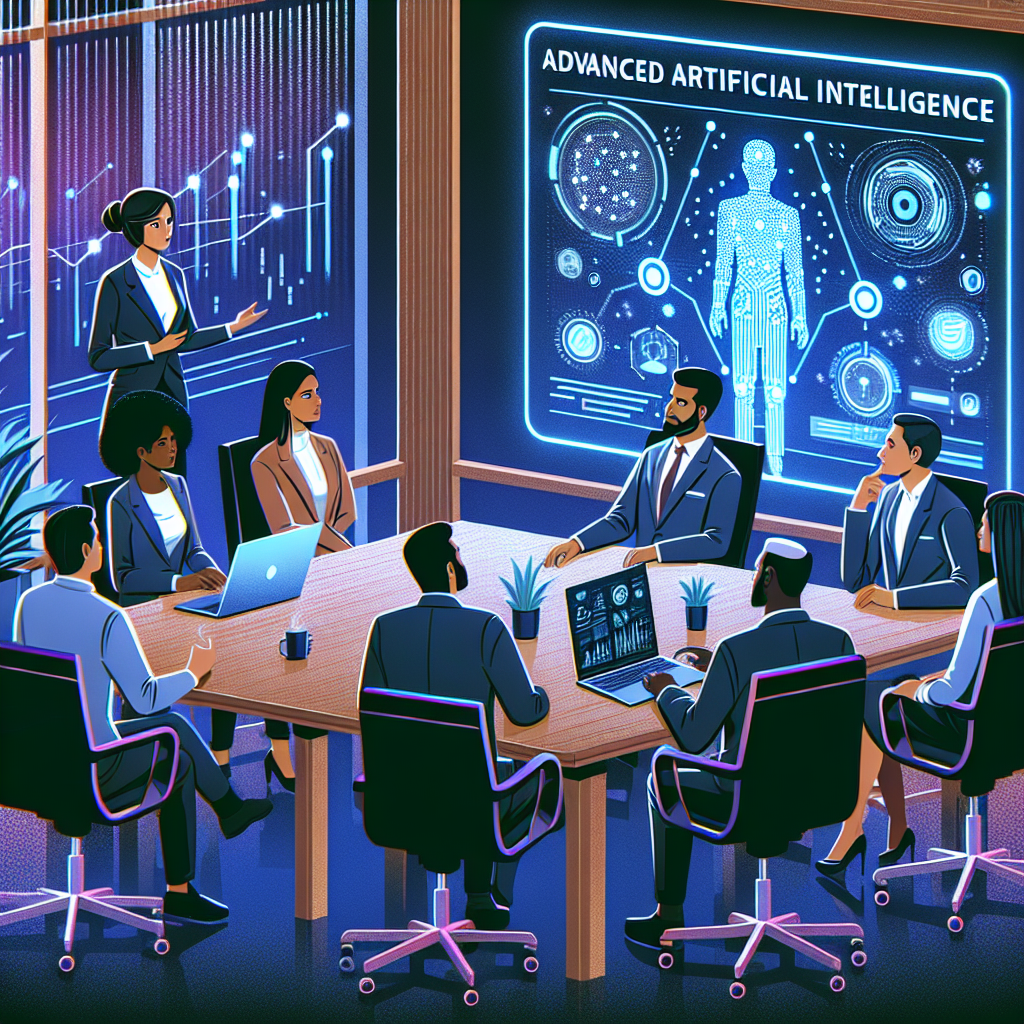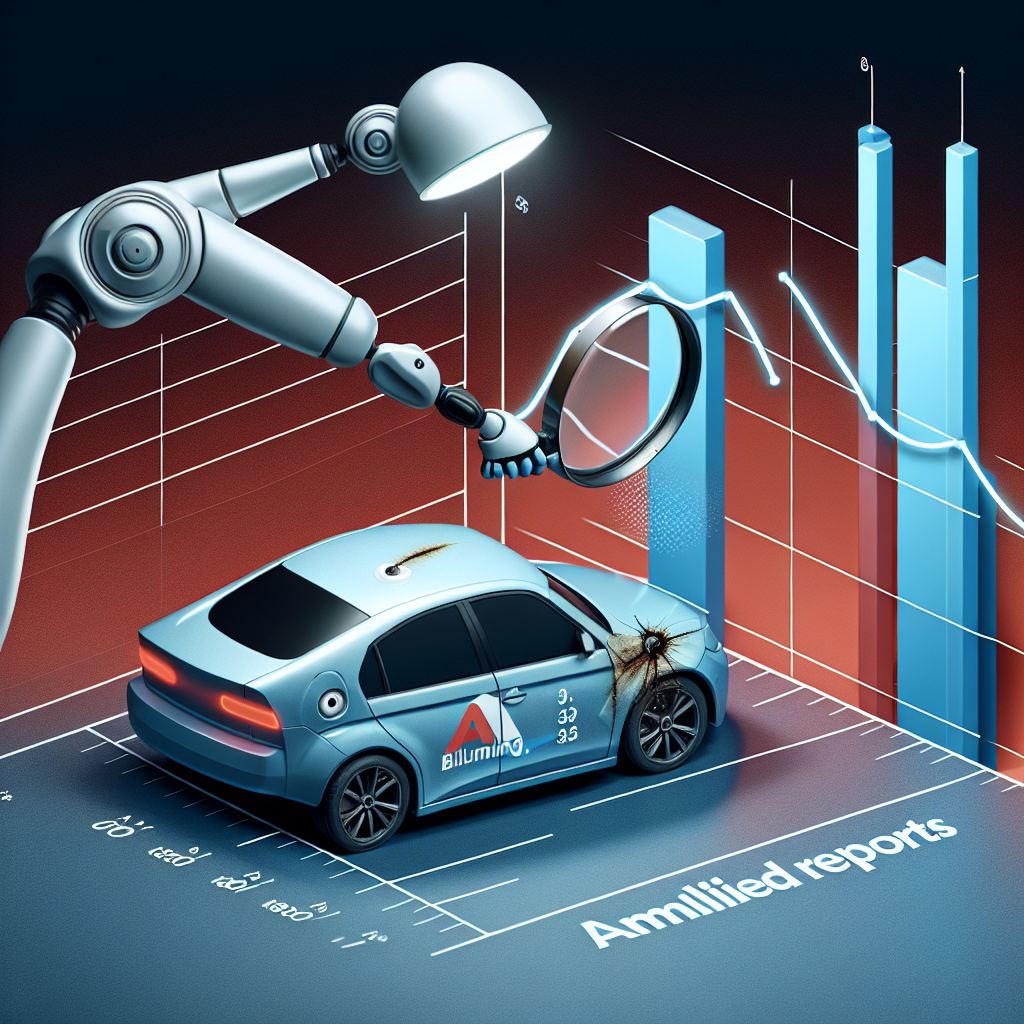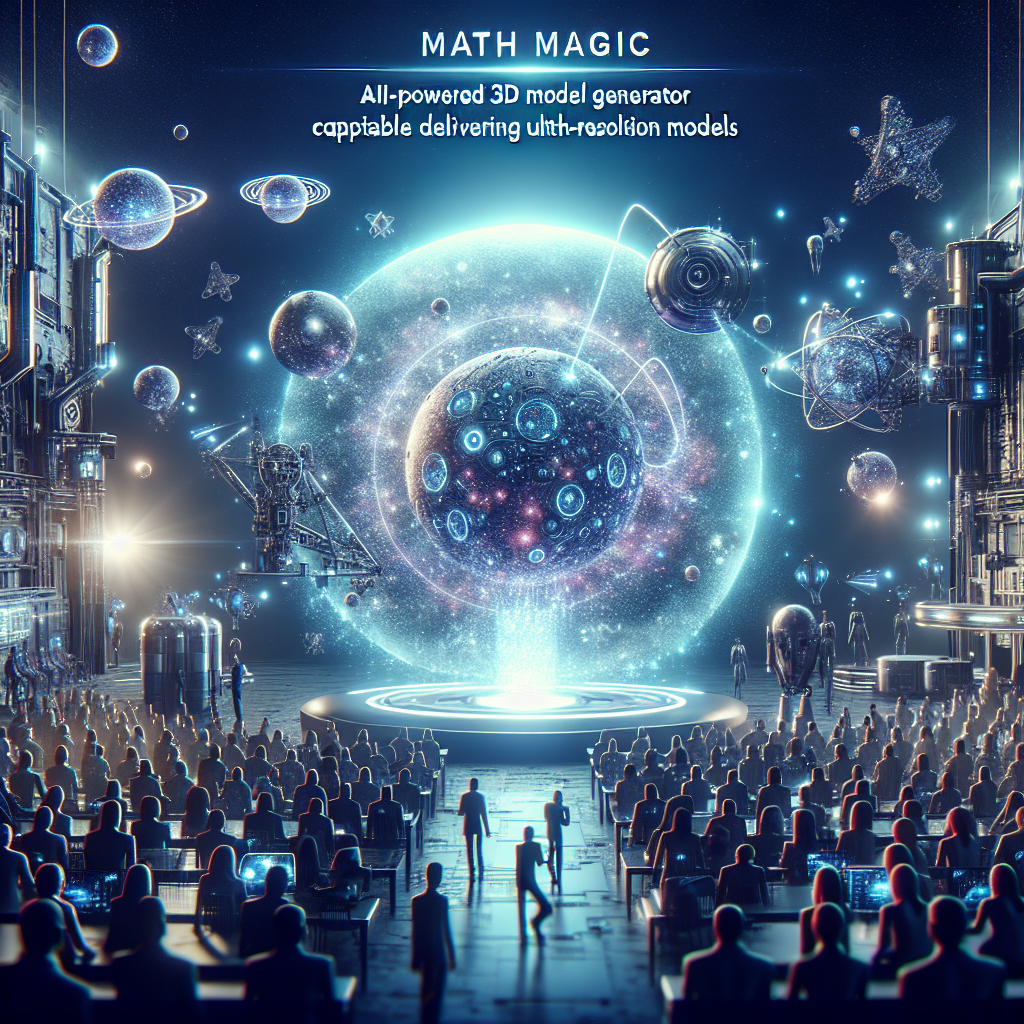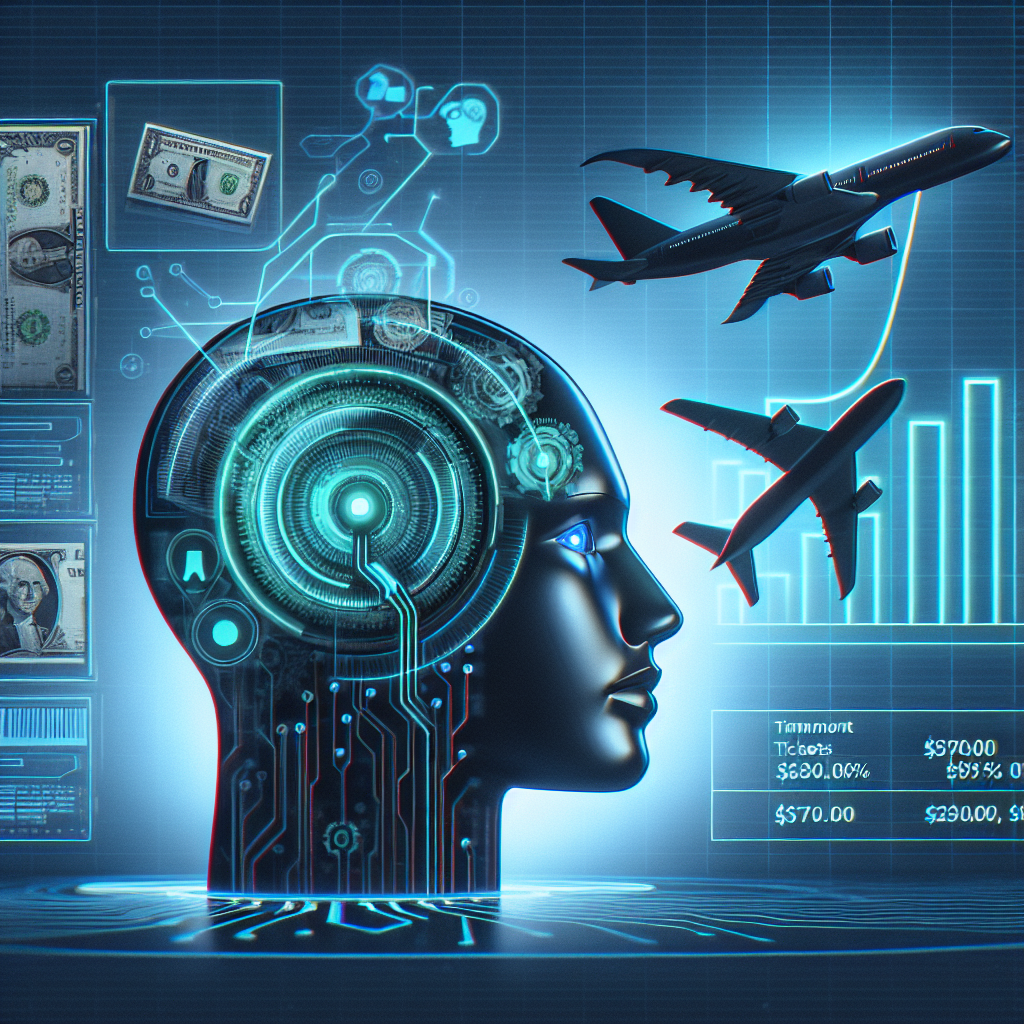-
How agentic AI is transforming the very foundations of business strategy

In an era defined by relentless competition and an insatiable demand for efficiency, businesses are on a constant quest to optimize operations, reduce costs, and enhance productivity. Historical evidence, dating back to ancient Mesopotamian traders, illustrates that the need for improved record-keeping served as a competitive edge long before the advent of modern technology. Today, however, artificial intelligence (AI) is revolutionizing how these efficiencies are attained, particularly through the emergence of agentic AI, which is positioned at the forefront of this transformation.
Agentic AI, as defined by Dan Priest, the chief AI officer at PwC US, encapsulates systems capable of autonomously perceiving, deciding, and acting to accomplish defined objectives within a specified scope. Unlike traditional algorithms that businesses have relied on for years, agentic AI offers a new level of sophistication, actively collaborating with humans and other systems to enhance operational effectiveness.
The true potential of agentic AI lies in its ability to grasp context and respond fluidly to change, surpassing the limitations of conventional automation and traditional managerial approaches. Its unparalleled flexibility allows it to navigate ambiguity while making informed decisions at remarkable speeds. As Priest articulates, agentic AI empowers organizations to operate with heightened intelligence and scalability, fundamentally altering traditional workflows and decision-making processes.
Realizing the Value of Agentic AI
For businesses to tap into the capabilities of agentic AI, an understanding of its transformative potential is crucial. However, the implementation of such advanced systems isn’t without its obstacles. Numerous factors hinder the successful integration of agentic AI into organizations, including the weight of technical debt stemming from outdated tools and processes, a resistance to change within internal structures, regulatory concerns, and a general lack of AI fluency among employees.
“Common barriers to achieving integrated agent systems include fragmented data environments, lack of interoperability between tools, and siloed organizational structures,” states PwC’s AI expert.
The process of implementing AI also demands careful consideration, as many organizations follow an incremental approach traditionally favored in IT. While this method is often perceived as a best practice, it can inadvertently lead to fragmentation when deploying AI solutions that thrive on cross-organizational collaboration. As a result, organizations may face inefficiencies and pushback from involved stakeholders.
Overcoming these challenges necessitates more than mere technology upgrades. It requires a cultural and operational paradigm shift that prioritizes seamless integration and alignment across various functions within the business. Moreover, organizations must grapple with security, compliance, and governance concerns that can decelerate the adoption of AI technologies, particularly in highly regulated environments.
Transitioning to Agentic AI: Best Practices
To successfully transition to a model that incorporates agentic AI, businesses must prioritize holistic integration strategies that bring together disparate data sources and foster collaboration. This enhances the ability of AI systems to operate at their full potential, generating insights that can lead to significant competitive advantages.
Simultaneously, organizations should invest in education and training initiatives to bolster AI literacy among their workforce. By equipping employees with the knowledge and skills needed to interact with AI systems effectively, companies can alleviate concerns and facilitate a smoother implementation process.
Furthermore, fostering a culture that embraces change and innovation is essential. This involves promoting an organizational mindset open to adapting new technologies and methodologies, thereby paving the way for successful AI integration.
Conclusion: Embracing the Future of Business Strategy
As businesses continue to explore the advantages of agentic AI, the emphasis on strategic implementation will be critical to unlocking its potential. With the right approach to integration, education, and cultural transformation, organizations can harness agentic AI to fundamentally reshape their operational frameworks. The opportunity to drive efficiency and enhance decision-making is within reach, representing a pivotal moment in the ongoing evolution of business strategy.
-
RISC-V Embedded Board Features TH1520 SoC, Dual GbE, and 4TOPS AI

The world of embedded systems is continuously evolving, with new advancements pushing the boundaries of what is possible in AI and smart device integration. A recent entry into this domain is the HH-SCDAYU800A, a development board that harnesses the power of the Alibaba T-Head TH1520 system-on-chip (SoC). Designed for multimedia applications, edge inference, and smart device connectivity, this board exemplifies the multi-faceted capabilities that RISC-V architecture brings to the table.
Built by RunKaiHong Digital Tech, a relatively unknown player based in Nanjing, China, the HH-SCDAYU800A not only showcases the technical prowess of the TH1520 SoC but also aims to address the growing demand for efficient processing in edge devices. Embedded systems are increasingly crucial in a variety of sectors, from smart home applications to industrial automation, where low power consumption combined with high performance is vital.
The TH1520 SoC at the heart of the HH-SCDAYU800A stands out due to its processing capabilities, which include a dual-core architecture based on the Xuantie C910 core. This core is designed to support clock speeds up to 2.5 GHz; however, the HH-SCDAYU800A operates at a slightly reduced clock speed of 1.85 GHz for optimal performance in real-world applications. This balance between power and efficiency is a hallmark of modern embedded systems, allowing developers to create devices that can perform complex tasks without draining resources.
One of the standout features of the HH-SCDAYU800A is its dual Gigabit Ethernet ports. This feature is crucial for applications requiring robust network connectivity, allowing for swift data transmission and allowing for real-time processing in demanding environments. The dual Ethernet functionality facilitates the seamless integration of smart devices, making it ideal for applications in IoT, industrial automation, and even multimedia streaming.
In addition to its Ethernet capabilities, the board offers numerous camera interfaces, enabling developers to create devices with advanced vision systems. This can lead to applications in surveillance, healthcare, and consumer electronics, bridging the gap between physical and digital realms. The ability to process visual data on the edge is not merely a trend but a significant leap toward decentralized and intelligent systems.
The industrial-grade design of the HH-SCDAYU800A reinforces its suitability for various commercial applications. As businesses increasingly turn to smart technologies, products like these will play a critical role in enabling real-time decision-making processes. Moreover, this board follows in the footprints of previous implementations, such as the LM4A module by Sipeed, the Meles SBC from Milk-V, and the BeagleV-Ahead from BeagleBoard.org, illustrating a trend towards standardization in hardware that leverages RISC-V architecture.
The TH1520 SoC not only excels in processing overhead but also boasts impressive AI capabilities, rated at 4 TOPS (Tera Operations Per Second). This metric is a significant indicator of its potential for AI workloads, making the HH-SCDAYU800A an attractive option for developers looking to integrate AI solutions at the edge. AI applications ranging from image recognition to real-time data analysis can benefit from such computing capabilities, unlocking new possibilities for innovation.
Furthermore, while RunKaiHong Digital Tech remains relatively obscure, the emergence of companies in regions like Nanjing signifies a shift in the global technology landscape, where innovation is not confined to traditional tech hubs. This diversified growth contributes to a more competitive environment in the embedded development landscape.
In conclusion, the HH-SCDAYU800A embedded board with the TH1520 SoC constitutes a significant step forward in providing developers with a powerful tool for creating advanced AI-driven applications. With key features like dual GbE ports, multiple camera interfaces, and an efficient design, it positions itself as a formidable contender in the embedded technology arena, ensuring that businesses and developers are well-equipped to harness the power of AI and smart technology integration.
-
Hertz Turns AI Loose On Renters, Billing 5x More Customers For Minor Nicks And Scrapes—And It’s Spreading Fast

In a bold move, Hertz has integrated advanced AI technology into its operations, fundamentally changing the car rental experience. The company is launching AI inspection portals at major U.S. airports, beginning with Atlanta and planning to expand to 100 airports by the end of 2025. These AI-driven systems are designed to assess vehicles returned to the company using a sophisticated camera and sensor setup, often described as an ‘MRI for vehicles.’ This shift allows Hertz to identify damage that would previously have gone unnoticed by rental staff, including hard-to-spot issues such as underbody damage, uneven tire wear, and even hairline cracks in windshields.
The implications of this technology are significant, particularly in how they impact customer billing. What used to be a rare occurrence is rapidly changing; Hertz is now reportedly billing customers for minor damages at an unprecedented rate. For instance, a seemingly insignificant one-inch scuff on a wheel is being charged to renters at $440—comprising a $250 repair cost, a $125 processing fee, and a $65 administrative fee. Many of these charges highlight a concerning trend: they may not even reflect repairs being conducted by the company, rather, they stand as a means for Hertz to collect revenue from unsuspecting customers.
This new approach is not about improving accuracy or even enhancing convenience. Instead, it appears to serve as a strategic way for Hertz to maximize revenue by targeting a broader swath of customers, many of whom may unknowingly fall victim to these practices. The company has seemingly adjusted the parameters of what constitutes billable damage, now going after five times as many customers as before. This shift in strategy enables a notable increase in the issuance of damage claims, which previously hovered between 0.3% and 1% of rentals. With about 10% of returned vehicles likely showing minor dents, scrapes, or glass chips, the AI system allows Hertz to charge for damages that were historically overlooked.
The rapid expansion of this practice raises serious questions about customer experience and ethical business conduct in the car rental industry. Historically, renters relied on major companies like Hertz for a stress-free experience, often avoiding the hassle of contention over minor vehicle damages. This new reality dismantles that value proposition, placing an increased emphasis on scrutiny and billing rather than customer service and satisfaction. Customers are now faced with a challenge that may not have existed previously: the necessity of meticulously documenting any vehicle condition prior to rental, as Hertz’s AI system raises the stakes significantly.
Statistical insights reveal a distinct shift in the landscape, with Hertz stating that fewer than 3 percent of vehicles scanned by their AI system actually show billable damage. This statistic starkly contrasts with the traditional handling of damage claims, wherein a substantial percentage of those claims are written off. The implications extend beyond just Hertz, signaling that competitors may feel pressured to adopt similar AI systems to maintain profitability. This creates an industry-wide focus on damage claims that could redefine the customer experience entirely.
As more customers find themselves navigating this new rental car environment, the potential for frustration and dissatisfaction is heightened. Rental agreements that once relied on trust may now require significant scrutiny from consumers who will need to adapt to protect their interests. This evolution represents a paradigm shift in how car rental companies may approach consumer relations, transparency, and revenue generation.
In conclusion, Hertz’s aggressive use of AI technology to drive up billing for minor damage marks a notable turning point in the car rental sector. As the company seeks to leverage this technology across its network, customers will need to be vigilant, prepared to document the condition of vehicles meticulously and engage critically with rental agreements. The future of car rentals may depend significantly on how this technology evolves and how consumers respond to its impact.
-
HighField AI accelerates broadcast graphics with intelligent automation

In an era where the demand for timely news production has never been higher, HighField AI emerges as a revolutionary solution tailored for the broadcast industry. This innovative platform marks the first instance of an agentic and multimodal AI system designed specifically to automate graphics production. Following extensive testing in global newsrooms, HighField AI is now commercially available, promising to redefine how news graphics are created and delivered.
HighField AI addresses the pressing challenges faced by modern newsrooms, significantly reducing the time spent on essential editorial tasks. Traditional processes often require journalists to manually source visual assets and populate story templates, consuming valuable time that could otherwise be devoted to crafting compelling narratives. With HighField AI, these tedious tasks are streamlined, allowing for enhanced productivity and creativity in the newsroom.
The platform integrates seamlessly with popular graphics systems and newsroom solutions such as Vizrt, Unreal Engine, CGI OpenMedia, Avid iNews, Saga, and ENPS. By automating the assembly of graphics, HighField AI can reduce manual workload by up to 75%. As a result, journalists can focus more on storytelling while accelerating the entire production workflow. The ability to quickly assemble and deliver graphics is crucial in today’s fast-paced news environment.
A noteworthy demonstration of HighField AI’s capabilities occurred at the 2025 NAB Show in April, where the platform showcased its innovative AI-powered workflow alongside Vizrt. This event highlighted the real-world applications of the technology, following extensive proof-of-concept testing with major broadcasters. Feedback from these trials indicated substantial efficiency improvements, with users expressing satisfaction with the results.
HighField AI operates using sophisticated AI agents that analyze stories developed within Newsroom Computer Systems (NRCS). These agents automate various components of the graphics assembly process, which typically involves numerous manual tasks. From selecting templates from broadcast graphics systems to pulling in text, images, and video clips from vast content libraries—HighField AI handles these intricacies to prepare complete graphics packages ready for editorial review. As it learns over time, the platform continuously enhances its speed, accuracy, and contextual understanding.
Despite its automation capabilities, HighField AI ensures that journalists and producers retain full editorial control. This is vital for aligning outputs with the creative standards and policies of individual newsrooms. By providing a framework that balances efficiency with editorial oversight, HighField AI positions itself as a trusted partner for news organizations.
The high demand for quality content delivered rapidly has pushed media teams to their limits. However, with HighField AI’s introduction, there exists a scalable automation solution that meets these challenges. According to Amir Hochfeld, the Founder and CEO of HighField AI, the positive feedback from broadcasters reinforces the industry’s readiness for such an advanced tool. HighField AI not only improves operational efficiency but also maintains high editorial standards, a balance that is critical in the competitive landscape of news media.
The commercial rollout of HighField AI has followed months of rigorous testing, during which the development team collaborated closely with leading broadcasters to validate performance and ensure seamless integration with existing infrastructure. The results from early deployments highlight the platform’s potential, showcasing its ability to enhance real-time production capabilities without compromising on quality.
HighField AI’s future looks promising as it continues to develop additional integrations to expand its reach within the broadcast technology ecosystem. By leveraging AI to transform the landscape of news graphics production, HighField AI not only enhances productivity but also empowers news teams to deliver richer, more engaging content at faster rates.
In conclusion, HighField AI stands at the forefront of a significant shift in the broadcast industry. By combining advanced AI automation with editorial integrity, it serves as a beacon of innovation that aligns with the evolving needs of newsrooms worldwide.
-
Math Magic Launches World’s First 1536^3 Ultra-High-Resolution AI 3D Model Generator Hitem3D.

Math Magic has made a groundbreaking advancement in the field of 3D content creation with the official launch of Hitem3D, a revolutionary AI-powered tool that enables the generation of ultra-high-resolution 3D models up to 1536^3. On July 11, 2025, the company announced this innovative tool aimed at transforming how designers and creators approach 3D modeling tasks.
With Hitem3D, users can simply upload a single image and instantly produce a detailed 3D model, complete with impeccable texture support and multiple available file formats for download. This dramatically simplifies the process for those without extensive 3D modeling skills, allowing them to convert creative ideas into high-resolution models that meet rigorous production standards.
Comparatively, most existing tools in the market are limited to a maximum resolution of only 1024^3. The difference may seem minor, but as industry experts note, it represents a significant upgrade; likening it to the transition from a GIF to an HD video. Bo Zhang, the product lead at Hitem3D, described that intricate models which took seasoned artists several days to create can now be produced in under three minutes with this advanced tool, showcasing the potential for efficiency and creativity.
Hitem3D is designed to overcome the limitations of previous tools, which struggled to generate higher-resolution models due to data loss during processing. This often resulted in users needing to invest considerable effort into refining generated models to restore critical details. By utilizing novel techniques, Hitem3D delivers what Zhang describes as a “what you see is what you get” approach to AI-based 3D creation. Users can now upload high-quality images and achieve unparalleled restoration of fine details, including minute structures that were previously difficult to replicate.
The technology behind Hitem3D features a unique sparse convolutional network and a fully symmetric 3D Variational Autoencoder (VAE) architecture. These innovations effectively minimize modal conversion errors, and the tool demonstrates a 40% reduction in reconstruction error compared to conventional models. Moreover, the implementation of sparse computation techniques leads to a 50% reduction in floating-point operations, significantly lowering both training and inference costs. Ultimately, this enhances the latent space representation quality for production-ready models.
User feedback has been overwhelmingly positive, with many 3D creators highlighting the tool’s remarkable accuracy and precise structural reproduction capabilities. Reports suggest that several artists have experienced efficiency improvements exceeding 90% during initial modeling stages, resulting in enhanced realism in textures and unlocking fresh opportunities across various industries, including 3D printing, product design, game development, and film production.
The implications of Hitem3D’s capabilities extend far beyond individual artists or small studios. By streamlining the process of 3D model generation, the technology can potentially impact larger industries seeking cost-effective and efficient solutions for product design and development. The tool’s ability to produce high-quality models swiftly can reshape workflows in different business sectors.
Looking ahead, Math Magic plans to further enhance Hitem3D by incorporating additional features such as retopology, multi-view generation, and 3D part segmentation. These expansions aim to lower barriers to entry even further, allowing a broader range of users to benefit from the tool’s capabilities.
Math Magic’s Hitem3D not only stands as a testament to cutting-edge technological progress in AI-driven design but also holds promise for reshaping how businesses approach 3D modeling. By making high-resolution models more accessible, Hitem3D offers a significant advantage in a competitive landscape, demonstrating that the future of content creation can be both innovative and practical.
For more information, visit the official website at hitem3d.ai or watch a demonstration video on YouTube here.
-
India’s IT majors bet on startups to stay ahead in the Gen AI era

The ongoing transformation in technology has led India’s IT giants to rethink their business strategies in the face of rapid advancements in Generative AI. As global interest in AI-driven solutions surges, major firms are placing substantial bets on innovative startups, aiming to harness fresh technologies and skill sets that can elevate their competitive edge.
As businesses across sectors increasingly explore AI capabilities, the emphasis on collaboration between large corporations and agile startups has never been more pronounced. Indian IT leaders are recognizing that startups are often at the forefront of innovation, bringing novel ideas and solutions to the table. These partnerships are not merely transactional; they are strategic alignments that allow established firms to tap into niche markets and advanced technology trends.
In recent years, firms like TCS, Infosys, and Wipro have ramped up their investment activities. For example, TCS recently announced plans to invest significantly in AI startups with promising technologies that can integrate into their service offerings. This move is seen as a proactive strategy to augment their existing capabilities while ensuring they don’t fall behind in the rapidly evolving tech landscape.
Additionally, these partnerships are expected to enhance customer satisfaction by providing customized, innovative solutions that leverage the latest advancements in AI. Through these collaborations, IT majors can benefit from the startups’ agility and innovative approaches while providing those startups with the commercial expertise, infrastructure, and resources necessary for growth.
Moreover, some of these collaborations also focus on developing new applications of AI, particularly in industries such as healthcare, finance, and education, where the implications of generative AI could be transformative. By investing in or partnering with startups specializing in these fields, IT firms can create tailored solutions that better meet the needs of their clients.
However, the integration of startups into the broader corporate framework is not without its challenges. Issues such as cultural differences, varying operational methodologies, and the pace of innovation can pose significant hurdles. Large corporations often operate with more structure and procedural guidelines, while startups may thrive in more flexible, less formal environments. Recognizing and bridging this gap is essential for a successful partnership.
Despite these challenges, the potential rewards are profound. With Generative AI capable of driving efficiency, enhancing creativity, and reducing operational costs, companies that adapt and innovate rapidly are likely to lead the charge in the upcoming digital revolution. The Indian IT sector is poised to take significant strides in this direction, contributing not only to its domestic economy but also to its global standing as a technology powerhouse.
The focus on startups is also reflective of a broader trend in the tech industry where the pace of innovation is paramount. As challenges and opportunities arise at breakneck speed, the ability to pivot and adopt new technologies quickly becomes a strategic advantage. Consequently, traditional tech companies are making the calculated decision to invest in and support the next generation of tech innovators.
In light of this evolving landscape, business leaders and investors need to keep a keen eye on these developments. The fusion of traditional IT prowess and the fresh dynamism of startups could very well result in groundbreaking solutions that redefine sectors entirely. As the narrative around AI continues to unfold, those that stay ahead of the curve by engaging with emerging technologies and startups will undoubtedly hold the key to future success.
-
Delta Is Turning Ticket Pricing Over To AI—By Year-End, 20% Of Fares Will Exactly Match The Most You’re Willing To Spend

Delta Air Lines is set to revolutionize its fare pricing model by leveraging artificial intelligence, with a bold target that 20% of their ticket prices will be determined by AI by the end of this year. This move comes as part of a broader strategy to optimize pricing based on individual customer willingness to pay, a crucial advancement in the often static and opaque airline fare systems.
Back in the fall, Delta introduced an AI-driven approach to manage approximately 1% of their flight inventory. The airline partnered with the Israeli firm Fetcherr to develop this system, which aims to analyze data to pinpoint the maximum fare each customer is prepared to pay at the precise moment they search for tickets. This represents a significant shift in how airlines can respond to market dynamics and customer behavior.
Delta’s President, Glen Hauenstein, highlighted this innovation at their recent Investor Day, emphasizing the capabilities of AI as akin to having a ‘super analyst’ who tirelessly analyzes and suggests optimal pricing strategies around the clock. The intention is to simulate real-time pricing that aligns closely with customer demand and preferences.
This overhaul in pricing strategy is not merely a technical upgrade; it signifies a fundamental change in how Delta approaches fare pricing in the future. By attempting to understand the ‘mind’ of their consumers, the airline aims to present relevant fare options at the right times with optimal pricing. This AI implementation is envisioned as a gradual process involving extensive testing and refinement over the next 18-24 months.
As of now, Delta has ramped up its AI pricing to impact about 3% of its domestic fares, a substantial increase from their initial rollout. Hauenstein confirmed the airline’s ambitious goal of achieving 20% AI-influenced pricing by year-end, although they remain in an ongoing testing phase to ensure the system’s reliability and success.
The shift towards AI-driven pricing methodologies has broader implications for the airline industry. While personalized pricing is not a new concept, Delta’s approach transcends previous models that typically offered discounts selectively to certain customers or loyalty program members. Instead, this system promises a more individualized fare structure based on a comprehensive understanding of the consumer base.
Looking ahead, if Delta’s strategy proves successful, it could potentially prompt other airlines to adopt similar AI-driven pricing strategies as the industry seeks to enhance revenue through personalized customer experiences. Loyalty programs may also evolve to incorporate aspects of this pricing regime, linking customer benefits directly to their participation in these AI-driven pricing models.
Furthermore, the implications of such a shift extend beyond just revenue optimization for the airline. It raises questions about the nature of consumer choice and pricing transparency. By implementing dynamic pricing strategies based on individual willingness to pay, airlines may simultaneously improve their profitability while also delivering a more tailored service to their customers.
This advancement in fare pricing can lead to competitive advantages, especially in a market where differentiation and customer loyalty are critical. The ability to analyze data and adjust pricing in real-time can enable airlines to make more informed decisions, potentially enhancing customer satisfaction and retention.
While there are still uncertainties surrounding how effectively these AI models will perform in real-world scenarios, the initial feedback from Delta indicates a strong optimism about the technology’s capabilities. The more data the AI systems are exposed to, the better they can learn and adapt, ultimately creating a more efficient pricing mechanism.
In conclusion, Delta Air Lines is positioning itself at the forefront of an AI-driven evolution in the airline industry. With plans to implement AI pricing on a larger scale, the airline not only hopes to increase its profitability but also reshape the way consumers engage with air travel pricing.
-
Startups are using Nvidia’s AI GPUs as collateral to secure loans of up to $10 billion from financial institutions

In an unprecedented move in the intersection of finance and technology, startups are now leveraging Nvidia’s AI GPUs as collateral to secure loans that could amount to a staggering $10 billion. This emerging trend is reshaping how companies engage with traditional financial institutions, signaling a newfound belief in the potential value of high-powered graphics cards.
Fluidstack, a London-based cloud startup, stands at the forefront of this innovation. According to reports from industry sources, the company has successfully secured over $10 billion in funding by utilizing its inventory of Nvidia AI GPUs as collateral with various lenders, including notable financiers like Macquarie. This approach underscores a significant shift where even banks are recognizing the intrinsic value of advanced hardware that was once predominantly considered tools for gaming.
The concept of using GPUs as collateral is not exclusive to Fluidstack. CoreWeave, another player in the cloud AI service market, has also pioneered this financial strategy. Recently, they secured $9.9 billion through loans backed by their Nvidia H100 AI GPUs. This creative financing approach illustrates a cyclic model: acquire GPUs, leverage them for loans, purchase more hardware, and fuel growth. The formulation appears somewhat paradoxical, especially considering the rapid depreciation rate of tech assets.
The willingness of financial institutions to engage in such collateral deals raises intriguing questions regarding the perceived value of these GPUs. With the fast-paced advancements in technology, it is surprising that banks are inclined to issue loans against assets that could quickly become outdated. Reports suggest that some of these collateral GPUs are stored securely, not being utilized in operations, pointing to a speculation that their value might be greater when held as financial assets rather than functional equipment.
However, the situation becomes precarious when considering the potential fallout of startups that might fail to meet their financial obligations. If a company defaults on its loan, the fate of the GPUs becomes a pressing concern. The collateralized assets must then be liquidated to mitigate losses for the lending institutions. If multiple startups face difficulties simultaneously, this could result in an overwhelming surplus of high-end AI GPUs flooding the market, negatively impacting their value.
Despite the apparent risks, the fact that banks are deploying substantial sums into these loans indicates a strong confidence in the market value of Nvidia’s GPUs. This financial endorsement could have far-reaching consequences, not just for startups but for the broader tech industry as well. A robust influx of capital could enable further advancements in AI technology, potentially resulting in competitive pricing for gamers and developers looking for reliable hardware.
Moreover, as the demand for AI capabilities grows, the stakes are considerably heightened, and the outcomes of these financial maneuvers may determine the trajectories of many tech-oriented ventures. With hefty loans on the line, the performance of these GPUs will become even more critical, and it is likely that startups will do everything in their power to ensure they leverage these assets effectively.
As the AI landscape continues to develop, the intertwining of hardware investment and financial strategy will be closely watched by industry experts and investors alike. Not only does this represent a new frontier for capital allocation, but it also highlights the evolving nature of how companies assess and utilize their technological resources. If Nvidia emerges as a central player in this financial strategy, it could pave the way for higher-quality products and healthier prices for consumers in the gaming market, beyond the currently available RTX 5060 TI 8GB, with hopes for even greater offerings in the future.
-
AI shapes autonomous underwater “gliders”

Marine scientists have long admired the remarkable efficiency with which aquatic animals like fish and seals navigate through water. These creatures possess bodies that are finely tuned for hydrodynamic movement, allowing them to traverse vast distances while expending minimal energy. Now, a similar approach is being applied to autonomous underwater vehicles, particularly gliders, which are designed to gather critical data from the depths of the ocean.
Traditionally, the designs for these gliding machines have been relatively limited, often resembling streamlined tubes or torpedoes due to their hydrodynamic properties. The process of testing new glider prototypes often entails a lengthy trial-and-error approach in real-world environments, which can be both time-consuming and resource-intensive.
Researchers from the Massachusetts Institute of Technology (MIT) and the University of Wisconsin-Madison are innovating this design process by leveraging artificial intelligence (AI) to explore and create unconventional glider shapes more efficiently. Their method utilizes machine learning algorithms to evaluate various three-dimensional designs within a physics simulation environment, optimizing them for hydrodynamic performance.
One significant advantage of this AI-driven method is the potential reduction in energy consumption during the fabrication of new designs. The researchers claim that the resulting models can be 3D printed using considerably less energy compared to traditional hand-crafted prototypes. This breakthrough not only streamlines the design process but also contributes to environmental sustainability efforts in manufacturing.
The research team demonstrated the efficacy of their approach by successfully producing two distinct glider designs, each about the size of a boogie board. One glider was inspired by the aerodynamic structure of an airplane, featuring two wings, while the other resembled a flat fish equipped with four fins. Peter Yichen Chen, a postdoctoral researcher at MIT CSAIL and the co-lead of the project, expressed excitement about the diversity of designs achievable through their semi-automated process.
“We’ve developed a semi-automated process that can help us test unconventional designs that would be very taxing for humans to design,” Chen noted. This level of design diversity is groundbreaking, as many of the newly generated shapes had not been previously explored in real-world scenarios.
The genesis of these innovative designs stems from a comprehensive dataset that included 3D models of over 20 conventional underwater exploration shapes, such as submarines and marine creatures like whales, manta rays, and sharks. Utilizing these models, researchers employed a technique known as “deformation cages” that allowed them to manipulate the original designs to create new variations.
After generating these distinctive shapes, the CSAIL team simulated their performance under various conditions, particularly focusing on different “angles-of-attack”—the specific angles at which a vessel approaches the water. For instance, an angle of -30 degrees may be optimal for divers retrieving objects from below the surface. These simulations provided valuable data that fed into a neural network, enabling the prediction of how effectively each glider design would function in various underwater situations.
This innovative use of AI not only signifies a substantial advancement in the design and functionality of autonomous underwater gliders but also opens up new possibilities for oceanographic studies. As these machines become more efficient, they have the potential to significantly enhance our understanding of marine environments by measuring critical factors such as water temperature, salt levels, and ocean current dynamics.
Furthermore, the project has broader implications for climate monitoring, as these gliders can help gather data necessary to assess the impacts of climate change on ocean ecosystems. By refining their design processes and embracing cutting-edge technology, researchers are paving the way for the next generation of ocean exploration tools.
As we continue to explore the depths of our oceans, the integration of AI in designing autonomous gliders represents a significant leap forward, merging technology with biology to facilitate unparalleled scientific discoveries.
-
It’s time to give AI security its own playbook and the people to run it

In the rapidly evolving landscape of artificial intelligence (AI), robust security measures have never been more essential. Dr. Nicole Nichols, a Distinguished Engineer in Machine Learning Security at Palo Alto Networks, emphasizes the urgent need for a dedicated playbook tailored specifically for the security of AI agents. As AI systems become more capable and autonomous, traditional security models must adapt to address the novel threats they present.
During a recent interview, Nichols shed light on critical issues, such as threat modeling, governance, and monitoring for AI agents that possess reasoning capabilities. Current security paradigms like zero trust and the Software Development Life Cycle (SDLC) may serve as foundational elements, but organizations need to evaluate if these existing frameworks can adequately safeguard against the sophisticated risks introduced by AI. The conversation raises the pertinent question: do we require a new security paradigm, or can we modify existing ones to fill the gaps?
According to Nichols, two pivotal factors must be taken into account when discussing AI security. Firstly, organizations must recognize that AI threats and the frameworks meant to combat them are separate considerations. As AI technology continues to advance, design requirements for security models need to evolve in tandem. Nichols argues for an adaptive approach that anticipates emerging threats, allowing security paradigms to be responsive rather than reactive. She cautions that organizations may find themselves in a cat-and-mouse game with AI threats, which can change dynamically and may not fit neatly into preconceived paradigms.
A critical point raised is the acceleration of attacks facilitated by AI, which can exploit vulnerabilities at an unprecedented scale. This necessitates a shift toward more agile defensive measures. Monitoring the unique threats posed by AI systems will demand both a proactive mindset and implementation of advanced security practices. Organizations will need to ensure that their security measures can flexibly accommodate new challenges and risks presented by constantly evolving AI capabilities.
Effective threat modeling for AI agents is essential for organizations aiming to integrate these technologies securely. Nichols offers two foundational principles for navigating this complex terrain. The first principle involves recognizing that AI systems often comprise compound models tailored for distinct tasks. These models may utilize reasoning and operational tools that are not under the organization’s direct control, including third-party agents. By adopting a holistic approach, organizations can better identify the interactions between these elements and the potential exploits that could arise throughout the AI ecosystem.
Furthermore, AI security should not just be an afterthought but must be seen as a distinct discipline, parallel to established areas like reverse engineering or cryptography. To address vulnerabilities, organizations should build multidisciplinary teams that incorporate varied perspectives—ranging from API security to cloud security—to effectively manage the complexities of the AI agent landscape.
As organizations begin to deploy autonomous and semi-autonomous AI agents at scale, establishing a robust governance or oversight structure becomes paramount. Nichols advocates for proactive governance, urging organizations to invest in the necessary resources and frameworks to navigate this uncharted territory. Collaborative oversight will ensure that ethical considerations are integrated alongside operational security, while also allowing organizations to adapt seamlessly to new developments in AI technology.
In conclusion, as organizations grapple with the integration of AI agents, the discussions led by experts like Dr. Nicole Nichols are vital for shaping security strategies that meet the challenges of today and tomorrow. The complexity of AI threats calls for innovative security measures, real-time adaptability, and an inclusive approach that encompasses both technical and ethical dimensions. Only through these comprehensive efforts can businesses ensure that they harness the potential of AI without compromising their security or the safety of users.
